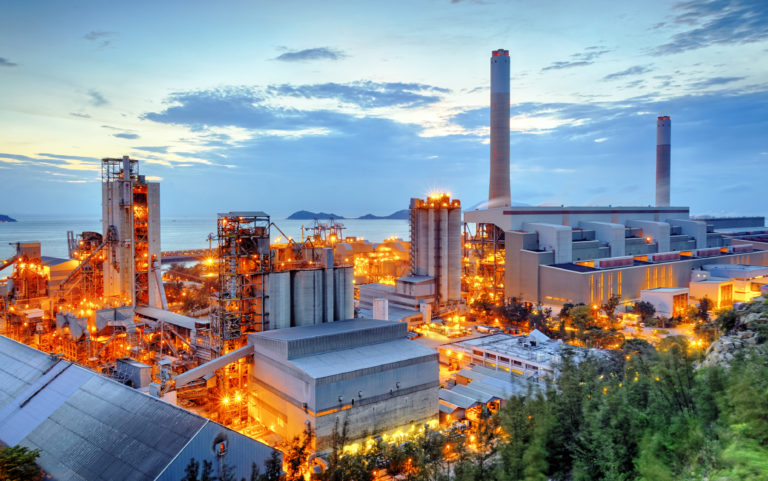In 1901, Spindletop’s legendary findings of crude oil in Beaumont, Texas catalyzed a new era of American energy production and subsequently, notable impacts on the daily lives of Americans. Today, Houston is home to more than 50 Fortune 500 Energy related companies. As of January 2018, the 29 established petroleum refineries in Texas contained approximately 5.7 million barrels of crude oil capacity and accounted for 31% of American refining operations. There are currently 135 refineries in 30 different states (with Louisiana and California being the second and third highest refining states) and a market that is booming with the construction of several small and large petrochemical plants, with operations focused primarily on specialty chemicals.
From 2012 to 2016, $160 billion was invested in the petrochemical industry and that number has only increased over time. Across the country petroleum production and refining, and petrochemical facilities are big business. Building their infrastructure and navigating the environmental cascade of regulations, however, is not easy.
These facilities face a fair amount of scrutiny. They tend to be large, in areas adjacent to waterways for transportation, and in population centers close to the consumers of petrochemicals. This creates a multitude of needs for compliance, permitting, investigation, and due diligence services.
Some Items to Consider During Initial Development of a Petrochemical Facility:
- Wetlands
- Threatened and Endangered Species
- Cultural Studies
- Phase I Environmental Site Assessment (ESA)
- Phase II ESA
- Air Permitting
- Dredging Investigations
- Dredging Permitting
- Due Diligence Investigation
- Dredge Spoil Disposal
- RCRA Permitting
- Wastewater Planning
Wetland, ecological, and historical use issues provide a basis for evaluating potential environmental impacts of a petrochemical facility. Site development challenges include considering the logistics of dredging for dock space under the Clean Water Act and the Rivers and Harbors Act, as well as considerations for the final deposition of tremendous volume of generated spoils. One must think about applicability to the Clean Air Act and what kind of air permitting will be required considering the local land use site development and construction costs can be greatly influenced by what is found during due diligence activities. Many waterfront areas have had past activities and are built from different urban fills that can affect plans for development, dredging, waste deposition and the remainder of the permitting process. One must also regard the cost for managing potentially impacted materials moving forward. While a Site may be granted closure by a regulatory agency, it does not guarantee that the materials can leave their current resting place.
Once development plans are completed and you are breaking ground on new construction (e.g., a new petrochemical development or a new area of an existing petrochemical facility), what are initial items to think about when building?
Wetland Mitigation
You can expect to have entered the mitigation phase of the wetland process. Mitigation is intended to replace the beneficial properties of wetlands that may be altered or destroyed by the development. In this processes, credits or new wetlands can be constructed at the Site or purchased from wetland banks.
Stormwater
Where does it go and how will it be dealt with? How will construction stormwater on-Site be managed? Stormwater retention and detention ponds can also present challenges as they can occupy considerable land area to satisfy regulatory requirements.
Dredging
Dreding is likely ongoing at this stage.
Spill, Prevention, Control and Countermeasure (SPCC) and/or Design
Facilities should consider the applicability/need for the development of a Spill Prevention, Control, and Countermeasures (SPCC) plan and proper design. Surprisingly, SPCCs and proper sized containments are not always addressed during the development phase of the project, and by the time the need for a SPCC plan and proper containment is identified, it is too late.
Wastewater Permitting
Permitting for wastewater is necessary so the facility can treat its process water or identify alternative options for managing the processed water.
Geotechnical Design
Potential geotechnical design of the bulkheads, foundations, or other plant features may be addressed at this point.
Media Management Plans
If the site was previously impacted from historical development, media management plans detailing how to deal with the impacted soils, sediment, or groundwater are especially important for the tracking of generated wastes, and communication of related health and safety concerns associated with potentially impacted medias for construction workers.
These are just some of the common hurdles faced with compliance and permitting for a petrochemical development.
Contact Our Environmental Consultants
For additional information or for help with development plans, please give us a call or click the link below to fill out our Contact Us form.
